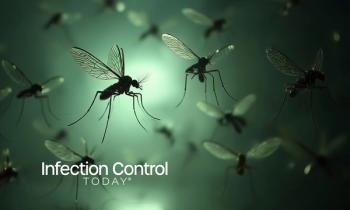
Using Social and Risk Networks Helps Identify People Undiagnosed With HIV
Conducting HIV testing among the social and risk networks of those recently diagnosed with HIV helps identify undiagnosed cases of HIV at significantly higher rates and at a lower cost than other testing approaches, finds a new study conducted in Ukraine by an international research team.
The study, led by Samuel R. Friedman of the Center for Drug Use and HIV/HCV Research (CDUHR) at NYU Rory Meyers College of Nursing and the National Development Research Institutes (NDRI), is published in the Journal of the International AIDS Society.
Caring for people with HIV and limiting HIV transmission both depend on locating and diagnosing HIV cases, ideally soon after infection. Large-scale testing and various forms of outreach to key populations are common strategies for locating people who are undiagnosed. However, in many countries, including Ukraine, considerable resources are spent on HIV testing and a large number of HIV-negatives are found for each person who tests positive.
“Tracing social and risk networks has been found to help locate people recently infected with HIV, given that the virus is transmitted through sexual and injection risk networks,” said Friedman, director of the Institute for Infectious Disease Research at NDRI and associate director and senior theoretician at CDUHR. “In addition, social norms and rumors about HIV testing and treatment are likely to spread through social networks, which often overlap with risk networks.”
In this study, the researchers compared three projects and their ability to identify undiagnosed cases of HIV: The Transmission Reduction Intervention Project (TRIP), integrated biobehavioral surveillance, and outreach testing. The research took place in Odessa, a large city in southern Ukraine and one of the areas where injection drug use and then an HIV epidemic began in the 1990s.
In TRIP, the researchers conducted network-based recruiting, counseling, and HIV testing from 2013 through 2016. Researchers recruited “seeds,” or participants who were potentially recently infected and whose risk networks could then be tested. Risk networks included sexual partners, people participants injected drugs with, people who were present while participants were having sex or using drugs, and people recruited from small-size venues where participants went to inject drugs or locate sexual partners.
TRIP looked at two types of “seeds” – those recently infected plus their risk network members, as well as those with longer-term HIV infections and their networks. Recently infected participants are an important target group for intervention because transmission is particularly likely during this time due to high viral loads, lack of immune response, and potentially elevated rates of risky behaviors.
Integrated biobehavioral surveillance used respondent-driven sampling – where people from a hard-to-reach population recommend other people they know – to recruit people who inject drugs. In the outreach testing project, people who inject drugs were tested for HIV at community outreach sites.
The researchers found that recruiting the risk networks of people infected with HIV through TRIP led to locating a significantly higher rate of undiagnosed positives than did either integrated biobehavioral surveillance or outreach testing. TRIP tested 1,252 people for HIV, 183 (14.6 percent) of whom were HIV positive; the integrated biobehavioral surveillance project tested 400 people and found 20 (5 percent) undiagnosed cases of HIV, while outreach testing was conducted on 13,936 people and found 331 (2.4 percent) undiagnosed cases of HIV.
“The superiority of TRIP as a way to recruit undiagnosed positives probably stems from its design. TRIP zeroes in on the social networks most likely to be infected rather than attempting to use ‘weak ties’ to recruit people who inject drugs and who are socially and geographically distant from the ‘seeds,’” Friedman said.
In addition, within TRIP, recently infected participants’ networks contained higher proportions of undiagnosed positives (16.3 percent) than the networks of longer-term infected people (12.2 percent).
Finally, TRIP was found to be a cost-effective method for identifying undiagnosed cases of HIV. For each person detected, the cost was $250 for TRIP, $387 for integrated biobehavioral surveillance, $941 for outreach testing in 2013-14, and $653 for outreach testing in 2015-16.
Given the success of TRIP in Ukraine and similar findings from Athens and San Diego, the researchers recommend that TRIP's recruiting techniques, including prioritizing networks of the recently infected, be integrated with existing HIV texting programs to improve the identification of new HIV cases.
In addition to Friedman, study authors include Pavlo Smyrnov and Yana Sazonova of the Alliance for Public Health in Kyiv, Ukraine; Leslie D. Williams of NDRI; Ania Korobchuk of the Alliance for Public Health in Odessa, Ukraine; Georgios K. Nikolopoulos of the University of Cyprus Medical School; Britt Skaathun of the University of Chicago and University of California, San Diego; Ethan Morgan of the University of California San Diego; John Schneider of the University of Chicago; and Tetyana I. Vasylyeva of the University of Oxford.
The research was supported by the National Institute on Drug Abuse (grants DP1 DA034989 and P30DA011041). Additional funding supported individual researchers, including funding from the National Institutes of Health (T32AI7384-26, R01 DA033875, and R21 AI118998) and the Clarendon Fund of the University of Oxford.
Source: New York University
Newsletter
Stay prepared and protected with Infection Control Today's newsletter, delivering essential updates, best practices, and expert insights for infection preventionists.





